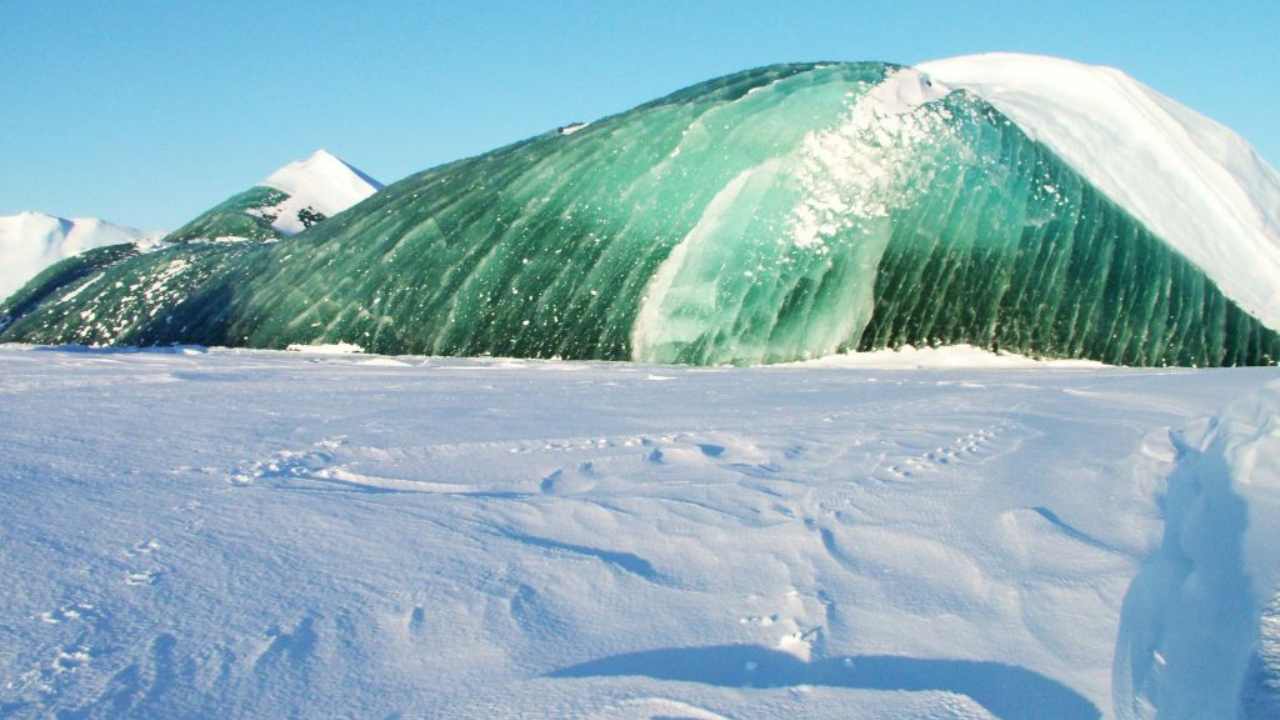Emerald-green icebergs. They’ve been documented in Antarctica for over a century, both in literature and images. But only in a new study do scientists say they understand where the colour comes from. Unlike the white or blue hues that ice sheets and icebergs are traditionally known for, there is a kind of ice formation below large ice sheets that gives them an unexpected green hue. This happens as seawater freezes to the bottom of these ice shelves, forming what’s known as marine ice. Chunks of marine ice look remarkably different. A recent discovery made by researchers during a 2016 research trip to the Amery Ice Shelf in East Antarctica may have solved the mystery of why — once and for all.
Ice in seas varies in colour because of the “abundance of foreign constituents,” particularly iron oxide minerals, in seawater. They settled on this conclusion after finding “large concentrations of iron” in the green-hued portions of Antarctica’s Amery Ice Shelf. The marine‐ice portions of icebergs are clear, dark, and green in colour more often than not. This comes from the red or yellow of seawater combining with the blue of ice, shifting the colour to green. While researchers had once thought that dissolved organic carbon (DOC) was responsible for the colour, the new study reports that it comes from the high iron content in seawater. Green-coloured marine icebergs can travel vast distances from their points of origin, capable of delivering iron as a nutrient to parts of the Southern Ocean when they melt. [caption id=“attachment_6208611” align=“alignnone” width=“1280”] A close-up image of an iceberg near Mawson Station, from November 1988. Much of it covered by snow, at the far left is bubbly blue-white glacier ice. The centre of the picture shows the clear, dark green, bubble-free marine ice. The boundary between glacier ice and marine ice is nearly vertical. Image credit: Warren et al[/caption] “Iron is a key nutrient for phytoplankton, microscopic plants that form the base of the marine food web. But iron is scarce in many areas of the ocean,” the researchers
told
Science News on Tuesday. The team plans to collect more samples to carry out more studies and prove their theory right. If they do, it would mean that green icebergs are ferrying precious iron from Antarctica’s mainland to the open sea when they break off, providing this key nutrient to the base organisms that supports all forms of life. “If our theory proves correct, green icebergs could be more important than scientists thought,” the team
told
Science News.
A close-up image of an iceberg near Mawson Station, from November 1988. Much of it covered by snow, at the far left is bubbly blue-white glacier ice. The centre of the picture shows the clear, dark green, bubble-free marine ice. The boundary between glacier ice and marine ice is nearly vertical. Image credit: Warren et al[/caption] “Iron is a key nutrient for phytoplankton, microscopic plants that form the base of the marine food web. But iron is scarce in many areas of the ocean,” the researchers
told
Science News on Tuesday. The team plans to collect more samples to carry out more studies and prove their theory right. If they do, it would mean that green icebergs are ferrying precious iron from Antarctica’s mainland to the open sea when they break off, providing this key nutrient to the base organisms that supports all forms of life. “If our theory proves correct, green icebergs could be more important than scientists thought,” the team
told
Science News.
)